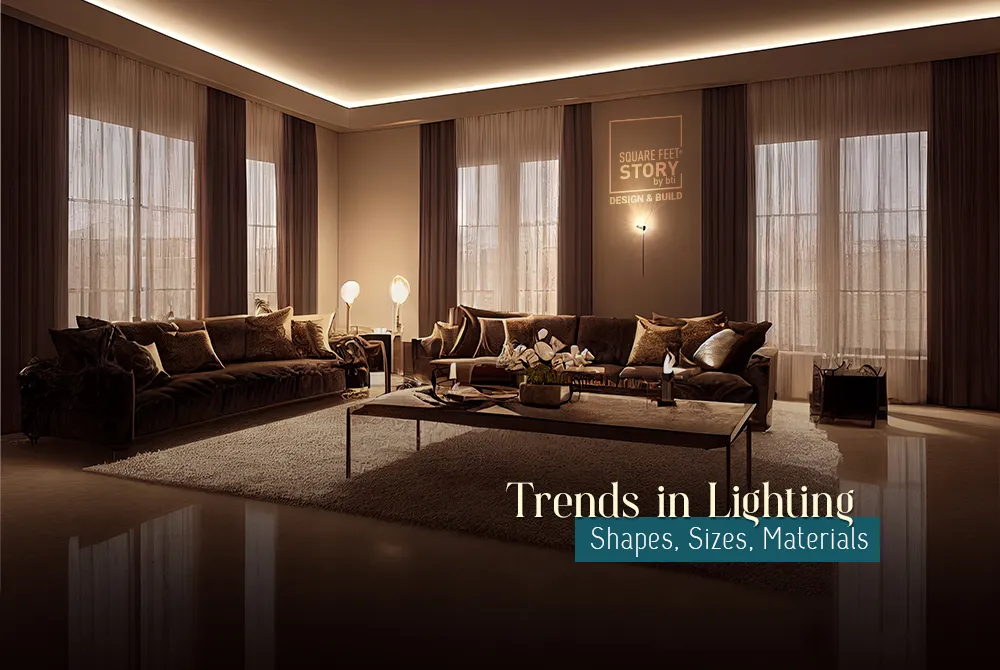
Trends in Lighting: Shapes, Sizes, Materials and What’s New
In the realm of interior design, lighting serves as the unsung hero, transforming spaces, setting moods, and enhancing aesthetics. As we navigate through the ever-evolving landscape of design trends, lighting continues to hold its significance, with innovations in shapes, sizes, and materials constantly redefining our perception of ambiance and functionality within interior spaces.
Let’s delve into the exciting world of lighting trends, exploring the latest in shapes, sizes, materials, and what’s new in the domain of interior illumination.
Shapes
Gone are the days when lighting fixtures were confined to traditional shapes like spheres, cylinders, or rectangles. Designers are now embracing geometric experimentation, introducing unconventional shapes that add a touch of artistic flair to interiors.
From asymmetrical designs to abstract forms inspired by nature, the emphasis is on creating visual interest and making lighting fixtures stand out as statement pieces in their own right.
Sizes
In recent years, there has been a noticeable shift towards both extremes of the size spectrum in lighting design. On one end, we see a rise in the popularity of oversized fixtures that command attention and become focal points within a space. These grandiose pieces not only provide ample illumination but also serve as captivating sculptural elements.
On the other hand, there’s a growing appreciation for petite, minimalist fixtures that offer subtle yet impactful lighting solutions, especially in compact living spaces where every inch counts.
Materials
The choice of materials plays a pivotal role in shaping the aesthetic and character of lighting fixtures. While classics like glass, metal, and wood continue to reign supreme, designers are increasingly exploring unconventional materials to push the boundaries of creativity.
From sustainable options like recycled plastics and natural fibers to experimental mediums such as concrete, ceramics, and even paper, the material palette for lighting has expanded exponentially, offering endless possibilities for customization and personalization.
What’s New
Innovation is the lifeblood of the design industry, and the realm of lighting is no exception. The latest advancements in lighting technology have opened up new horizons, allowing designers to explore innovative concepts that were once considered unthinkable.
From smart lighting systems that can be controlled remotely via smartphones to eco-friendly LED fixtures that offer energy efficiency without sacrificing style, the future of lighting is brighter than ever.
Moreover, there is a growing emphasis on sustainability and eco-conscious design practices, with manufacturers and designers alike embracing renewable materials, energy-efficient technologies, and recyclable components to minimize environmental impact.
Furthermore, the integration of lighting with other elements of interior design, such as furniture and architecture, is becoming increasingly seamless, blurring the lines between form and function and creating cohesive, immersive environments that engage all the senses.
In conclusion, the world of lighting in interior design is a dynamic and ever-evolving one, driven by creativity, innovation, and a deep appreciation for the transformative power of light. From bold shapes and sizes to diverse materials and cutting-edge technologies, the possibilities are limitless, offering designers and homeowners alike the opportunity to illuminate their spaces in ways that are as unique and expressive as they are functional and beautiful.


